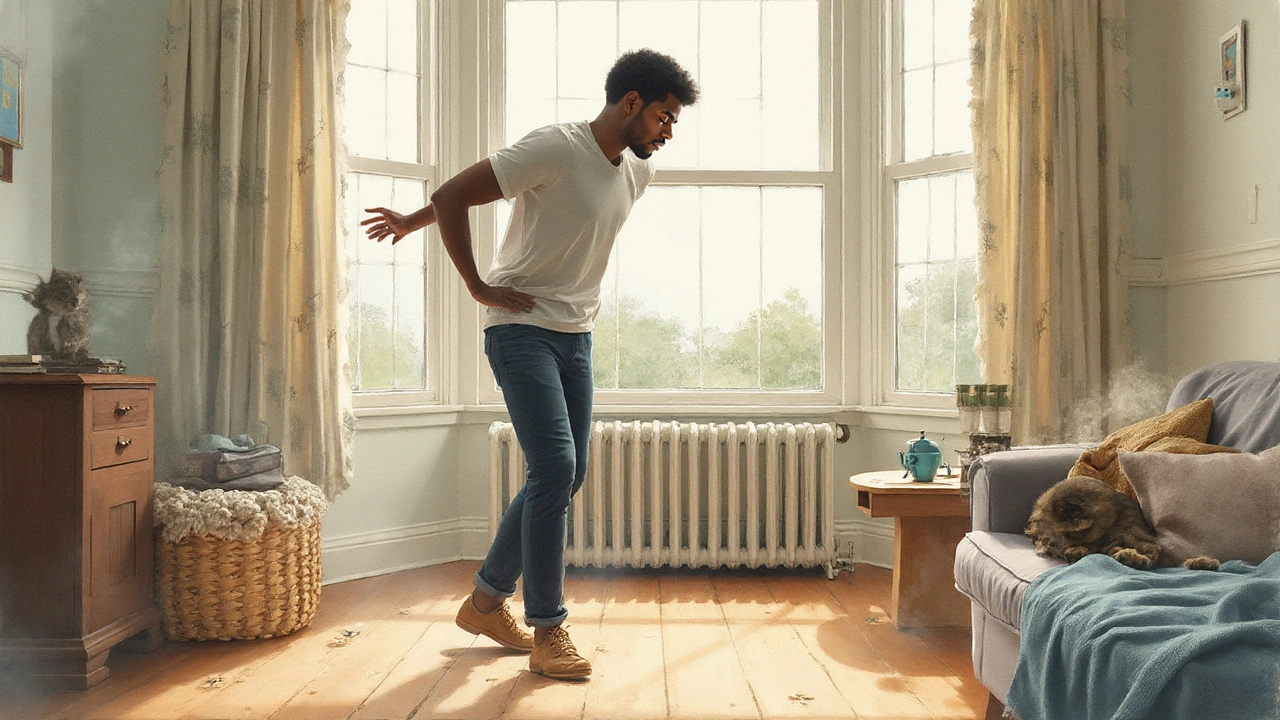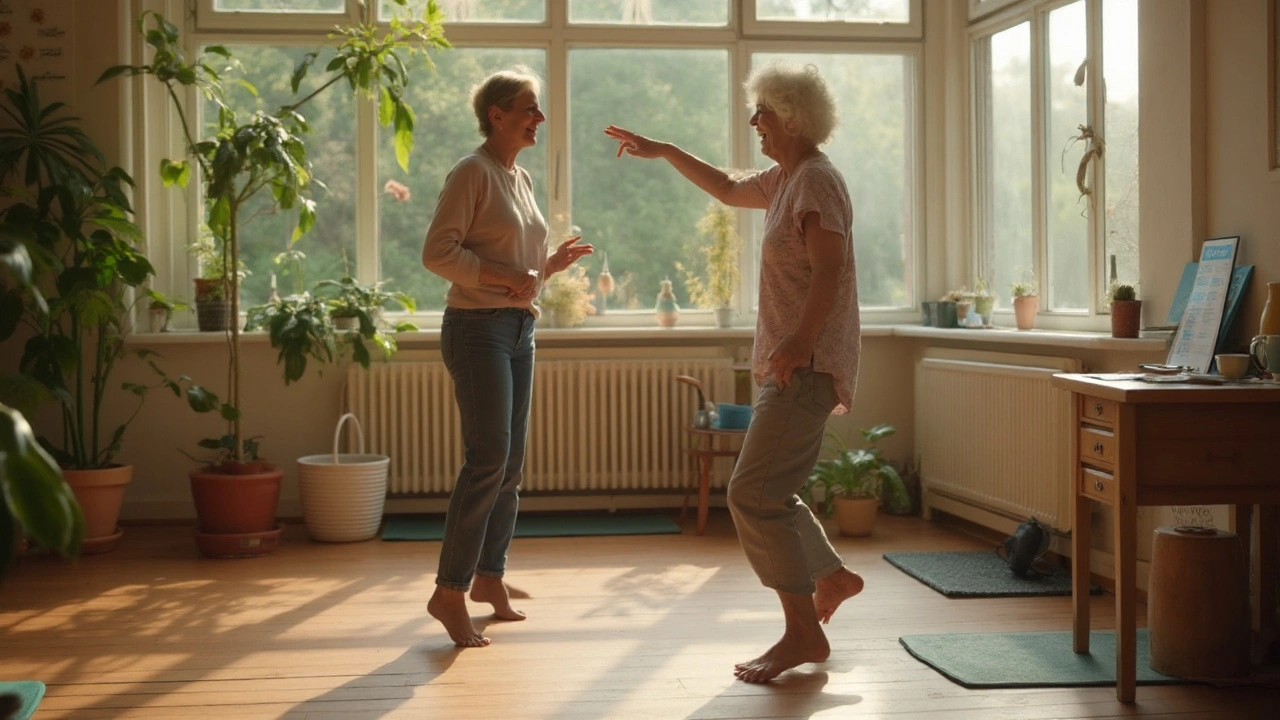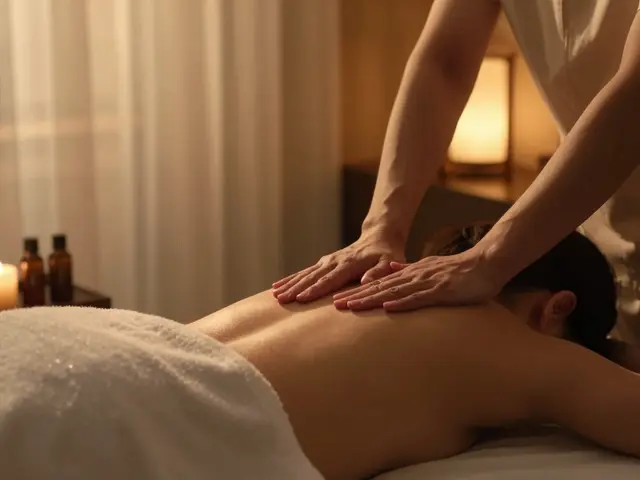You’re tense, your shoulders sit near your ears, and regular deep-tissue work leaves you sore without lasting change. You want relief that feels kinder, yet actually shifts how your body moves and holds stress. That’s where Trager therapy can help. It uses gentle rocking, soft traction, and mindful movement to retrain your nervous system, not just your muscles. Expect a quiet, spacious session that leaves you lighter, more aligned, and moving with less effort. Results are often felt right away, and they build with practice-especially when you add simple self-care moves at home.
TL;DR: The Healing Touch of Trager Therapy
- What it is: A gentle, nervous-system-focused approach using rhythmic rocking, passive movement, and mindful self-moves (called Mentastics) to reduce tension and improve ease of movement.
- Who it helps: People with chronic muscle tightness, stress, neck/shoulder/back pain, limited range, and some neurological tone issues (like stiffness). It’s also great for athletes who feel “stuck” or guarded.
- What it feels like: Comfortable, slow, and quiet. No digging, no forcing. You’ll likely notice softer muscles, easier breathing, and smoother walking right after.
- Evidence: Early and limited for Trager specifically; stronger evidence exists for massage and gentle movement on pain, anxiety, and relaxation. Low risk when done by a trained practitioner.
- What to expect: 60-90 minutes, loose clothing or draping, lots of subtle movement. Best results when you do short Mentastics at home between sessions.
What Is Trager Therapy? How It Works and Who It Helps
Trager Therapy (often called the Trager Approach) began with Milton Trager, MD. He noticed that soft, rhythmic movement could “talk to” the nervous system and release long-held tension patterns. Instead of pushing hard on tight spots, Trager invites your body to remember how to be light. It’s not a typical massage. There’s minimal oil. You’re often clothed or lightly draped. The work happens through gentle rocking, soft traction, and wave-like motions that feel calming and oddly familiar-like being rocked on a boat or swaying with music.
The big idea: your muscles don’t clamp down on their own; your nervous system tells them to. Trager speaks to that control center with safety signals-slow rhythm, predictable touch, easy breathing-so your body can let go. This is why people often stand up after a session and say, “I feel taller,” or “My steps feel bouncy.”
Two core parts make Trager different:
- Tablework: The practitioner moves your limbs gently, creating light, pendulum-like waves through your tissues and joints. You stay relaxed, often eyes closed, while your system re-learns easier patterns.
- Mentastics: Short, simple self-movements you can do anytime-tiny pendulums of the arms, soft knee bounces, floating head or shoulder glides-to keep the ease going between sessions.
Who tends to benefit?
- Desk workers with neck and shoulder tension who feel locked up by midday.
- People with chronic low back tightness who get short-term relief from deep pressure but not lasting change.
- High-stress folks who live in fight-or-flight and need a downshift without feeling poked or prodded.
- Active people who feel “braced” or guarded in their stride or golf swing and want smoother coordination.
- Those managing neurological stiffness (for example, Parkinson’s-related rigidity) who need gentleness and nervous-system calming.

What a Session Looks Like: Step-by-Step + At-Home Mentastics
Here’s what to expect the first time you book:
- Brief chat (5-10 min): You set goals-less neck tension, easier walking, better sleep. Share medical history, recent injuries, and what touch feels safe for you.
- Clothing: Comfortable gym clothes or soft layers are fine. Many sessions are done clothed; if draped, expect minimal oil.
- Tablework (40-70 min): You lie on a soft table. Your practitioner rocks and floats your limbs, pelvis, ribs, and head through tiny arcs. It’s quiet and slow. You might be invited to notice sensations-warmth, breathing ease, shoulder weight dropping-and to match your breath with the movement.
- Standing/walking check (5-10 min): You’ll often stand and take a few steps. Most people feel lighter or “springier.” If something still feels sticky, the practitioner will fine-tune a few spots.
- Mentastics teach-in (5-10 min): You’ll learn 2-3 mini-moves to keep the new feeling going at home.
What it should not feel like: strain, bracing, or pain. Trager respects your nervous system’s pace. If anything feels off, say so. The best sessions happen when you feel safe.
Try these Mentastics (2-3 minutes each, 1-3 times daily):
- Cloud Shoulders: Stand tall. Imagine your shoulders are clouds drifting. Tiny up-and-away glides as you exhale, then let them drift back down. No shrugging. Just airy.
- Jelly Knees: Soften your knees like they’re made of jelly. Bounce them a fingertip’s worth-barely-so your thighs and calves sway. Let your breath match.
- Pendulum Arms: Tip from your hips slightly and let each arm swing like a pendulum. Small arcs. Feel your shoulder blades glide along your ribs.
- Buoyant Pelvis: Place hands on hips. Gently sway your pelvis right-left and front-back, tiny circles. Smooth and slow, like drawing with a pencil.
- Floating Head: Imagine a helium balloon lifting the crown of your head. Micro nod yes/no with ease, just enough to feel your neck soften.
- Heel Sigh: Standing, shift weight to one foot and lift the other heel a centimeter, then let it drop like a soft sigh. Switch sides.
Habit you’ll keep: Every 50-60 minutes of desk time, take a 90-second Mentastics break. The dose is tiny. The effect stacks up through the day.
After your session: Drink water, take a short walk, and notice small changes: a longer breath, less jaw clench, easier head turns while driving. Jot a few notes. These wins guide your next session.
Benefits, Evidence, and How It Compares
What Trager likely does: It sends your brain safety signals through slow rhythm and gentle stretch. Your muscle spindles and tendon receptors recalibrate, your breath deepens, and your nervous system shifts toward rest-and-digest. The outcome is less guarding, less “holding,” and more efficient movement.
What the research says right now:
- Specific Trager research is small but suggests short‑term improvements in rigidity for Parkinson’s and reduced perceived muscle tension. Effects often appear immediately and may be transient without follow-up practice.
- Massage and gentle bodywork more broadly have better evidence for short‑term pain relief and anxiety reduction. These findings support Trager’s general effects, even if Trager-specific trials are limited.
Selected evidence snapshot (for context):
| Topic / Population | Design / Size | Main Outcome | Timeframe | Source |
|---|---|---|---|---|
| Chronic low back pain (massage in general) | Cochrane review (multiple RCTs) | Small to moderate short-term pain and function gains vs. minimal care | Up to 12 weeks | Cochrane Review (Furlan et al., 2015) |
| Anxiety and mood (massage in general) | Meta-analysis | Reduced state and trait anxiety; small to moderate effects | Immediate to short term | Moyer et al., Psychological Bulletin (2004) |
| Parkinson’s rigidity (Trager-specific) | Pilot studies (small N) | Immediate reduction in passive muscle stiffness in treated limb(s) | Immediate to short term | Pilot trials in rehabilitation / complementary medicine journals |
| Stress physiology (massage in general) | Controlled studies | Increased parasympathetic activity (HRV), lower cortisol in some trials | Immediate to hours | Peer‑reviewed studies in integrative/psychophysiology journals |
How Trager compares to other options:
- Swedish massage: Uses more oil and continuous strokes. Great for general relaxation. Trager is lighter and more movement-based, aimed at nervous-system retraining.
- Deep tissue / trigger point: Breaks up adhesions with firm pressure. Helpful for specific knots. Trager avoids pain and works by reducing guarding so muscles release without force.
- Myofascial release: Slow sustained holds on fascia. Trager is more rhythmic and rocking, focusing on effortless coordination, not just tissue length.
- Feldenkrais / Alexander: Movement education with minimal touch. Trager blends gentle touch and movement re-education plus take-home Mentastics.
- Physical therapy: Clinical rehab with exercise and modalities. Trager can complement PT by reducing tone and fear of movement so exercises feel easier.
Rule of thumb: If deep pressure leaves you braced, or your tightness bounces back by the next morning, try three Trager sessions plus daily Mentastics. If you need targeted strength or rehab, pair Trager with a guided exercise plan.

Safety, Choosing a Practitioner, Checklists, FAQs, and Next Steps
Safety first. Trager is low risk, but there are times to pause or modify:
- Skip until cleared: fever, acute infection, uncontrolled high blood pressure, deep vein thrombosis, recent fracture or surgery without medical clearance.
- Modify: osteoporosis (no forceful end-range), EDS/hypermobile joints (smaller arcs), pregnancy (side-lying comfort positions), neuropathy (check sensation; avoid extremes).
- Communicate: Any dizziness, tingling, or pain-speak up right away. You’re in charge of pressure and pace.
How to choose a practitioner:
- Certification: Ask if they are certified in the Trager Approach and trained in Mentastics. Look for ongoing education.
- Fit: Share your goals. A good practitioner mirrors them back with a simple plan (“We’ll aim for neck ease, smoother walking, 2-3 sessions to start”).
- Style: Sessions should feel safe, unhurried, and collaborative. You should never feel pushed through pain.
What it costs and how often: Prices vary by region and experience. Sessions are usually 60-90 minutes. Many people notice change in one visit; a practical plan is weekly or biweekly for 3-4 sessions, then taper. Some pair Trager monthly with regular movement practice.
Quick checklists
Before you book
- One sentence goal: “I want less jaw clench and easier neck turns when driving.”
- Medical notes: list meds, recent procedures, and any “no-go” zones.
- Preference: clothed vs. draped; music vs. quiet.
What to bring/wear
- Soft, stretchy clothes (tank/tee, joggers or leggings, warm socks). Leave jewelry at home.
- Water and a light layer for after (you may feel extra relaxed).
Aftercare
- 5-10 minutes easy walking.
- Two Mentastics you can remember with your eyes closed.
- Note your “one shift” (e.g., “My shoulders sit lower”).
Mini‑FAQ
- Will it hurt? No. Trager avoids pain. If anything stings, tell your practitioner to adjust.
- What do I wear? Comfortable clothing works. If draped, you’ll be covered like a standard massage.
- How many sessions do I need? Start with three to feel pattern changes. Many stay monthly for maintenance.
- Can Trager help arthritis? It won’t change joint surfaces, but it may ease muscle guarding, improve range, and reduce stress, which can make movement feel better.
- Is it safe during pregnancy? Yes, with side‑lying and comfort positions. Always tell your practitioner you’re pregnant.
- Will I be sore after? Usually not. Some people feel pleasantly loose or a bit floaty for a few hours.
- Is it covered by insurance? Sometimes when billed under massage or bodywork with specific credentials. Ask your provider and insurer.
- How is it different from “just relaxing”? The goal is lasting coordination change-less holding, smoother gait. Mentastics makes the new pattern stick.
Pro tips
- Pair Trager with breathwork: 4-second inhale, 6-second exhale during rocking to amplify the relaxation response.
- Use “anchor thoughts”: Pick a word like “soft” or “float.” Repeat it quietly when you feel tension creeping back.
- Stack it with smart strength: After a session, do light band work or easy mobility drills. The body learns new patterns faster when relaxed and then gently reinforced.
Common pitfalls to avoid
- Expecting one session to erase years of bracing. Aim for steady, compounding ease.
- Skipping Mentastics. Those 90-second breaks are the glue that holds your gains.
- Going too deep elsewhere right after. Give your nervous system 24 hours to enjoy the new ease before intense workouts or deep tissue.
Next steps by persona
Desk-heavy professional
- Schedule: Three weekly sessions, then monthly.
- Daily: 90 seconds of Cloud Shoulders + Jelly Knees every hour.
- Track: Head-turn comfort while driving and afternoon jaw tension-rate 0-10.
Runner or weekend athlete
- Schedule: Every other week for 4-6 weeks during base training.
- Daily: Pendulum Arms + Buoyant Pelvis as part of warm‑up.
- Track: Stride smoothness, post‑run calf tightness, and perceived effort on easy runs.
Person managing neurological stiffness
- Schedule: Weekly at first (with clinician’s ok), then adjust to tolerance.
- Daily: 2-3 Mentastics at a time of day when stiffness peaks.
- Track: Ease of sit‑to‑stand, turning in bed, or walking initiation.
Highly anxious or poor sleeper
- Schedule: Weekly for 3-4 sessions, then as needed.
- Daily: 5 minutes of slow breath (4 in, 6 out) with Floating Head before bed.
- Track: Sleep onset time and middle-of-the-night tension level.
Troubleshooting
- I don’t feel much during sessions. Tell your practitioner. Slower pace, smaller arcs, and clearer focus (e.g., ribs or feet) can unlock sensation.
- I feel lightheaded after. Sit up slowly, sip water, take a short walk. Next time, ask for an extra minute of grounding at the end.
- Changes don’t last. Add two tiny Mentastics breaks per day and book sessions closer together for the first month.
- I still want deep work. You can mix methods. Try Trager first to reduce guarding, then add targeted manual therapy or mobility work a day later.
If you’re craving ease without force, Trager gives your body a new script: soft, rhythmic, and safe. That’s usually all your nervous system needs to unlock a lighter way to move through the day.








